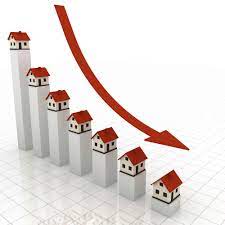Housing across various developed countries for the first time since over a decade appears to be vulnerable to a fall in price.
According to a report by Goldman Sachs, the 2008 housing bust might repeat itself but this time; the U.S. won’t be at the epicenter of this housing pullback.
A recent report by Goldman Sachs released recently titled, “The housing downturn: A bigger deal down under and up north.” predicts that a crash-like drop in home priceswill be experienced in New Zealand (–21%), Australia (–18%), and Canada (–13%).
For comparison, the U.S. housing bubble saw home prices drop 27% between the 2006 peak and the 2012 bottom.
Goldman Sachs clearly has Australia, Canada, and New Zealand in the housing crash (or almost crash) camp, however it’s less pessimistic about other G10 countries.
Through the end of 2023, Goldman Sachs researchers predict that home prices will fall 6% in France and remain unchanged in the United Kingdom. Meanwhile, they say U.S. home prices will actually rise 1.8% in 2023.
Why is Goldman Sachs so much more bearish on countries like Australia and New Zealand than the United States? It boils down to detached fundamentals. While home prices in the U.S. are historically frothy, home prices in countries like Canada are simply off the charts. In 2021 alone, Canadian home prices soared 27% while U.S. home prices climbed a more modest 18.9%.
“Across the G10, home sales are falling quickly and home price growth is slowing, with outright price declines in places that saw the bigger increases during the pandemic,” write Goldman Sachs researchers.
That said, the researchers note some U.S. regional housing markets will very likely see home price declines heading forward. Which markets? Goldman Sachs didn’t say. However, the list probably includes frothy markets like Boise and Phoenix.
A separate analysis by Moody’s Analytics predicts that U.S. home prices will either remain stable or fall as much as 5% from peak to trough. In the nation’s 187 significantly “overvalued” regional housing markets, including Boise and Charlotte, Moody’s predicts home price declines of 5% to 10%. But that assumes no recession.
If a recession hits, Moody’s thinks U.S. home prices would fall 5% to 10% and significantly overvalued regional markets would see 15% to 20% drops.
But just because groups like Goldman Sachs and Moody’s Analytics are not predicting a housing crash in the U.S., does not mean the housing downturn won’t weaken the overall U.S. economy.
Another report by Goldman Sachs released last week projected that activity in the U.S. housing market will end 2022 and 2023 down across the board.
The firm expects sharp declines this year in U.S. new home sales (a 22% drop), U.S. existing home sales (a 17% drop), and U.S. housing GDP (an 8.9% drop). Goldman Sachs projects further declines next year in U.S. new home sales (another 8% drop), U.S. existing home sales (another 14% drop), and U.S. housing GDP (another 9.2% drop).
The economic contractions caused by the ongoing housing correction could be even more severe in countries like New Zealand, Australia, and Canada.
“Based on this negative outlook for home prices, and the importance of residential investment and housing wealth, we find that the housing downturn poses larger downside risks to GDP in New Zealand, Australia, and Canada,” write the Goldman Sachs researchers. In New Zealand, the investment bank says, it’s likely the housing downturn pulls the country’s overall economy into a recession.
Source: Fortune





